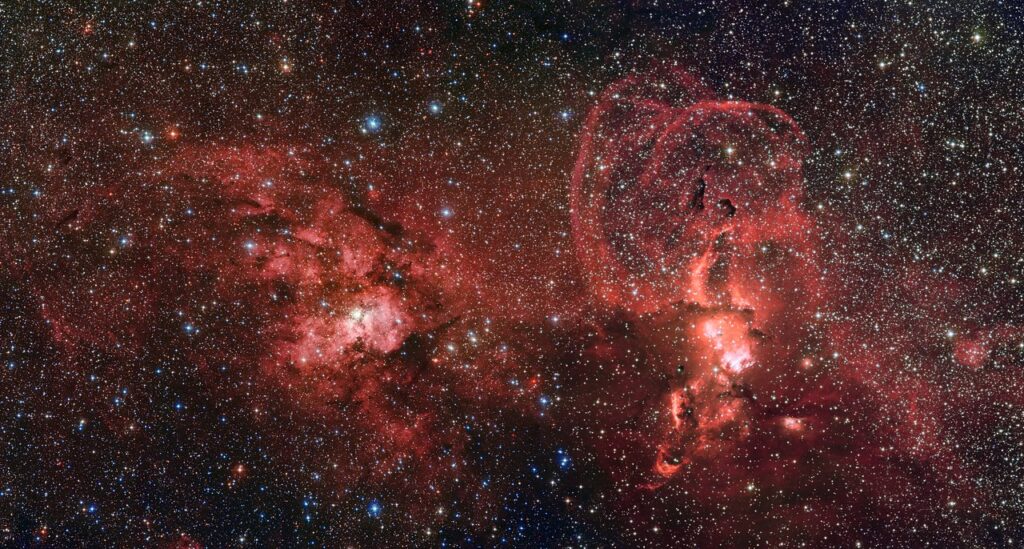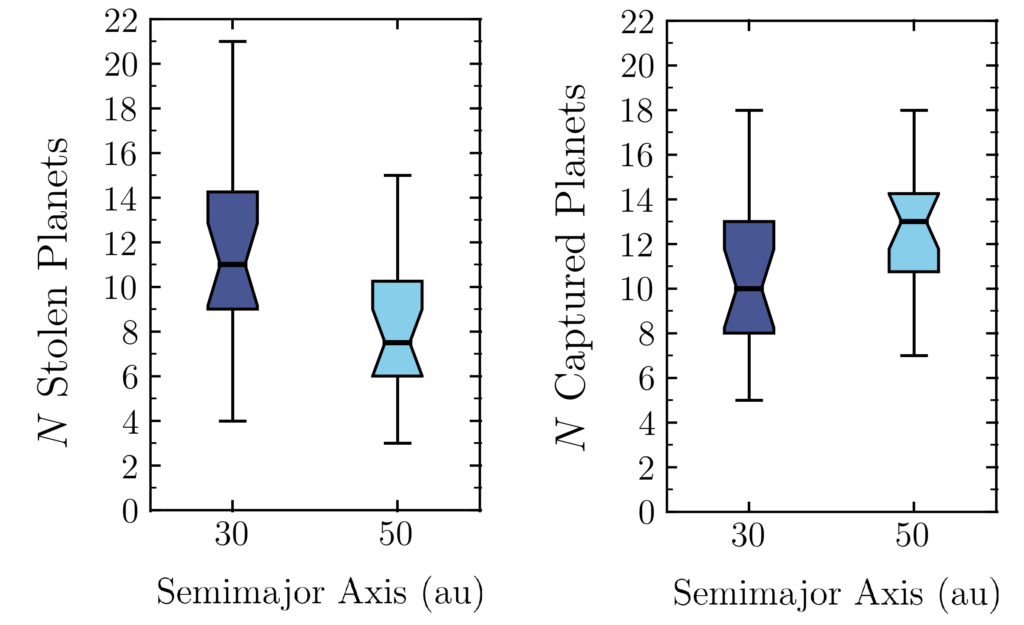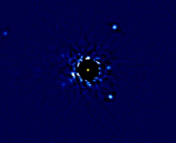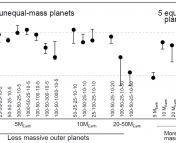Title: The Great Planetary Heist: Theft and capture in star-forming regions
Authors: Emma C. Daffern-Powell, Richard J. Parker, and Sascha P. Quanz
First Author’s Institution: Department of Physics and Astronomy, The University of Sheffield, UK
Status: Accepted to MNRAS [closed access]
A star forming region, a region containing gas and dust where stars form through collapsing cloudlets, can become very crowded with stars. Busy crowds are known to attract petty criminals and pickpockets targeting valuables, especially planets. Stars, you better make sure your bags are zipped!
Committing the crime
When a star in a star formation region encounters another star hosting a planet, it can maliciously steal the planet. During an encounter, two stars get close enough to gravitationally influence each other. This gravitational influence can cause the planet to change its orbit, such that it may end up orbiting the other star. The frequency of encounters within a star forming region is determined by several factors. One of them is the amount of stars contained in the region, called the stellar density. Another factor is the abundance of substructures: gas in star forming regions is usually not distributed uniformly, but clustered and clumped, forming spectacular landscapes as shown in Figure 1. How crowded the area or sub-area is in turn determines how often planets can get stolen.

But why do we even care about these planet heists in regions that far away? The authors of today’s paper answer this question as follows: stolen planets have different properties than planets still in the system they were formed in. This can help us identify whether a planet was stolen or not.
The investigation
Using N-body simulations, which are simulations tracking gravitational forces between multiple objects, the authors act as detectives by studying the orbital properties of planets. Orbital properties include semi-major axis, which determines the distance from the star to the planet, the eccentricity, and the inclination as measure for the orientation of the orbit.
In order to compare properties, the authors classify the planets into three groups: stolen planets, captured planets, and preserved planets. Stolen planets are defined as planets that originally orbited one star and were transferred directly to another star during an encounter. Captured planets, however, are planets that got ejected from their original star system and were drifting through space for a while. They then were captured by another star that found the planet at random. In their drifting phase, they are called free-floating planets. Although planet theft and planet capture may seem like the same process, the authors point out that they are actually two distinct mechanisms that might influence the resulting orbital properties differently. The last group, preserved planets, are planets orbiting their original star, despite potential gravitational encounters with other stars. Some preserved planets can show altered orbital properties, they are then classified in a sub-group as disrupted planets.
Aiming at investigating the influence of initial conditions on the result, the authors conduct several simulations. Each simulation contains a thousand stars within the star forming region. A total amount of 500 planets are assigned randomly to the stars, so that half of the stars host a planet.
Solving the crime

Which properties will the planets have in the end? In their investigation, the authors of today’s paper find that captured planets are on much wider orbits than stolen and preserved planets, and that stolen planets usually have larger eccentricities than preserved ones. This means that looking at both the semi-major axis and eccentricity, we would be able to distinguish the origin of an observed planet. Using their results, they conclude that planets with semi-major axes larger than 500 au are most likely to be captured planets. Figure 2 shows the amount of each kind of planet over time.
The authors further investigate the influence of different initial conditions on the result. As one test, they perform two almost identical simulations, with the only difference that in one simulation, all planets are placed with a semi-major axis of 30 au, while in the other they orbit with a separation of 50 au. The authors find in Figure 3 that the 30 au planets get stolen more often than captured. The 50 au planets on the other hand get captured more often than stolen. They explain this phenomenon with the fact that planets with larger initial semi-major axes are less bound gravitationally and therefore more likely to be ejected. Thus, more free-floating planets occur and in turn more planets can be captured.

Another investigation of initial conditions shows that the results highly depend on the stellar density and the substructures. Higher stellar densities result in more frequent gravitational interactions and therefore more ejections of planets. Simulations containing regions with more distinct substructures produce more stolen, captured, and free-floating planets. However, the resulting orbital properties remain similar in simulations regardless of the initial substructures.
There is also an ongoing discussion about a ninth planet in our Solar System – Planet 9. It is not proven yet that it exists, but there are indications in favor of the planet. If it exists, its semi-major axis is estimated to be 400–600 au. The authors of today’s paper argue with their results that if there is indeed a planet, it is most likely a captured planet.
Today’s paper suggests that planet theft and capture is quite common in the Universe. Solving these crimes can shed light on the origin of planets and planetary architectures.
Astrobite edited by Konstantin Gerbig
Featured image credit: NOAA and “Carmen Sandiego”, Netflix, 2019




